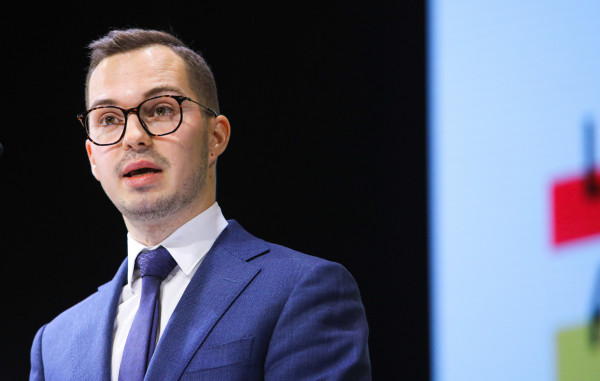Why and what needs to change in forest management

The findings of the last five years in the forest and wood processing industries are presented yesterday and today at the conference "Zināšanās balstīta meža nozare" (Knowledge-Based Forest Industry).
Jurģis Jansons, director of the Latvian State Forest Research Institute Silava, talked about the lineage of the event. Namely, it has already been a tradition to present forest science knowledge every five years in three-day face-to-face events, but the current state of emergency has shortened the event to two days and, most importantly, replaced face-to-face talks and discussions with webinars and electronic communication.
The event began with congratulations from the Minister of Economics Jānis Vitenbergs and the Minister of Environmental Protection and Regional Development Artūrs Toms Plešs and wishes for successful work to both scientists and the entire industry or industries engaged in forest and wood management. No one has the slightest doubt that forest management is doing well and sustaining the country, which is particularly evident in the face of the overall economic downturn for Covid-19 and other reasons. The question is whether there is still a need and why something needs to be changed in the forestry and wood industry complex. Will the extra investment pay off? Will the additional costs also bring additional benefits to the owners of small forest areas?
The participants of the conference discussed two external circumstances, due to which things will have to be changed no matter what.
First, Latvia's promise to become climate neutral by 2050. In principle, it would be a ban on the country's population to breathe and emit CO2 if the government fails to prove that the same amount of CO2 is removed from the atmosphere by trees growing in the country.
What was said about breathing is, of course, an exaggeration, but restrictions on the use of vehicles, livestock and industry due to CO2 could be realistic if we believe that Europe and the world will maintain an order somewhat similar to the current one by 2050. Even if there is no such belief, Latvia and its forest sector must be vigilant and able to attract money issued by the European Central Bank and given by the European Commission in exchange for promises to invest this money in measures that reduce CO2 emissions and increase CO2 sequestration.
Secondly, global warming, which comes with high winds and new species of tree pests and diseases. Such threats must be taken into account, regardless of the extent to which warming is or is not related to human activities.
To put it very approximately, the current level of knowledge promises ways to increase wood production by 1/5 to 1/4. To say it in other words, instead of pines less than a hundred years old, pines less than 80 years old could be felled with the same diameter of trees or the same total amount of wood that is now obtained from hundred-year-old fellings. For spruces, the cutting age should be reduced from 80 to 50 years, and so on for all species of industrially-usable trees. In that case, in the same place where the current forestry methods would create a clearing 100 years later, the new methods by that time would have already grown a forest more than a decade old or older, which Latvia would report as being or nearing its maximum CO2 sequestration, and the European Commission would allocate another portion of virtual oxygen to the Latvian population and for respiration and management.
The conference marked a number of steps towards this goal. It should start with the use of selected tree seedlings or seeds, continue with planting on raised ground (according to current knowledge, they would be 12 cm high hills), rather than easier and cheaper to prepare furrows, and treatment of seedlings and plantings to repel forest beasts that eat saplings, etc. Every step in this direction also requires side steps that are invisible and incomprehensible to those outside the forestry industry. How, for example, to fight a tree root rot? It was interesting to learn that the spores of such a perilous fungus could spread within a radius of up to 500 km, land on stumps, get underground through their roots and infect the roots of growing trees, infiltrate the tree to a height of 12.4 meters and release the next spores. It can be combated either by infecting the stumps with much safer fungi that prevent bad fungi from multiplying on them, or by pulling out the stumps in the clearings. If the stumps are pulled out, then again, the question is whether to do so as in Soviet times with a bulldozer that completely mixes the forest soil, or with finer and more expensive equipment? Does removing the stumps not impair the supply of nutrients to future trees and where in that case will the beetles live?
Today, foresters will continue to discuss answers to questions, of which only a small part is provided here for insight. Topics related to wood processing started yesterday and will continue today, which requires a separate publication.
Notable quotes
Jānis Vitenbergs, Minister of Economics:

- At the time of Covid-19, forestry in Latvia is one of the two sectors that hires people laid off by other sectors.
Artūrs Toms Plešs, Minister of Environmental Protection and Regional Development:

- Without forests, there would be no Latvian landscape or Latvian economy.